Goldfish Selecting and Rearing - Round Body Oranda by heckel90
I´m trying to create a new line of oranda. The main characterictic is rounded body but with harmony (in balance). I call it “harmonious rounded body”.
I started breeding a trio 3 years ago (November, 2009). Every year I have culled very hard from the early stages but this last one was not necessary because the offspring started to be much better. Now I got it so, I´m focused in other things like big wens, perfect fins, nice colors, elegance, harmony in swimming and robust appearance. All of this is too much but with time and patience is possible.
I´m culling after month when I´m able to see significant differences.
October 26th, 2011:
I joined a female (F2) with three males (F1; F2; and a new male to add strength). This spawn was the biggest I´ve ever had (more than 4000 eggs) so culling was pretty different. First 10 days culling was eliminating 3000 fry randomly with several buckets so I wasn’t able to do a real culling (one by one).
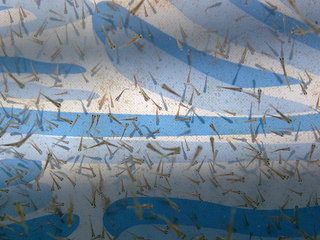
You need hours and a group of people to do a proper culling one by one. If you have 1000 fry ,it is possible.
After eliminating so many fry it becomes easier. Now they have lots of food and space for proper growth and better potential.
In this picture they are 17 days old and you can see differences. Some are fat and robust and otherS are skinny. I eliminate the skinny ones, of course. Because the breeders are good, the deformities are uncommon.
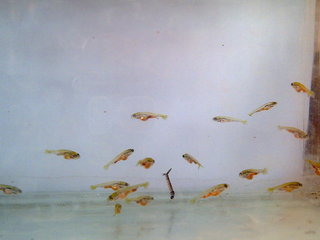
Although they are 1000 fry, density is big so I cannot see significant growth. Cull time again!
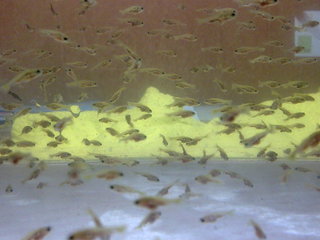
At this stage I eliminate a few deformities in spine, tail, and some smaller fry.
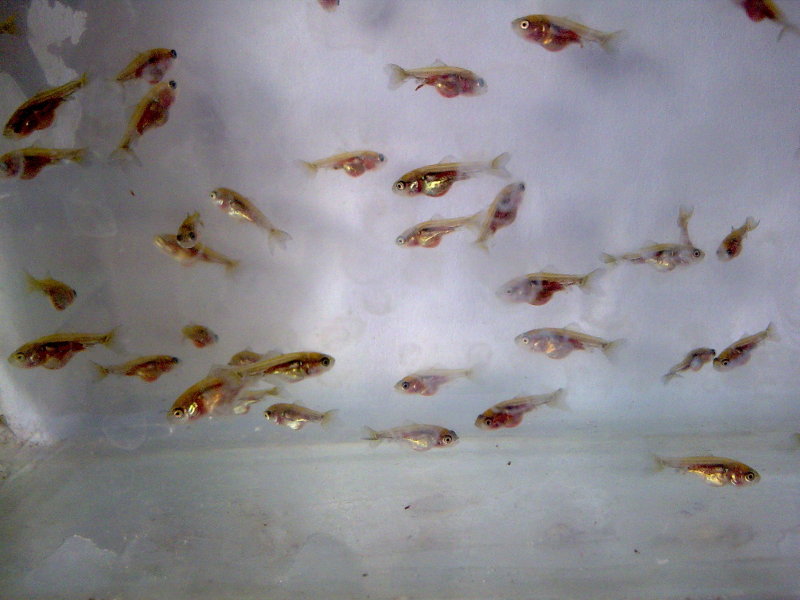
Now they are 27 days old, the differences are evident with good eyes??? in some of them. For example, fish “A” has a better head according to its body than the other fry. The others have smaller heads, I call this, out of balance. B, C and D may come from A, The other male fish A, because they seem longer (possibly the new male is the father). If you see the eyes, the out balance fry have the eye closer to the mouth, and that´s not good. In this case I only select “fry A” for my future brood stock. Look in this picture:
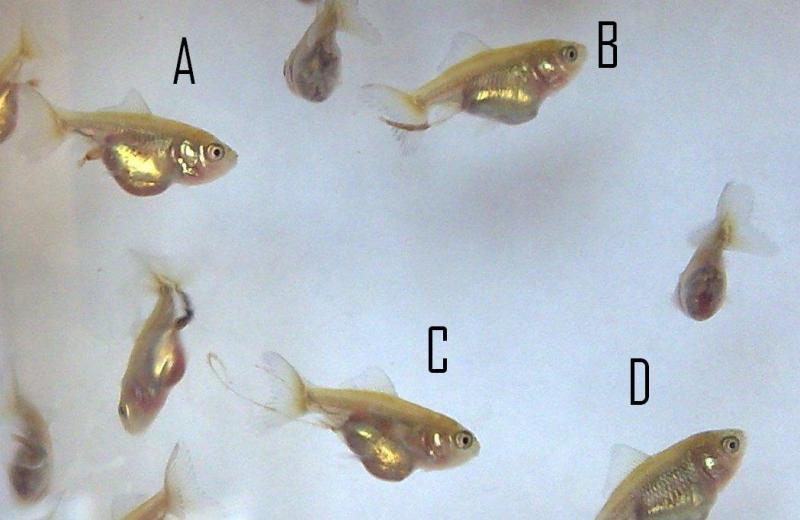
They are 35 days, although they have to be bigger. They failed in the first week because of the density the length is good. If you see the next picture, the bodies are rounded in most of them which means that the gene´s characteristic is already fixed.

With 38 days they go outside with natural food and much sunlight. Now they are 300 “similar” fry…
After a few weeks they almost are 2 months old, still without color and much bigger, of course. 200 fry.
In this stage all have to be really good looking fish in appearance. Some exceptions could occur like this ugly fish…
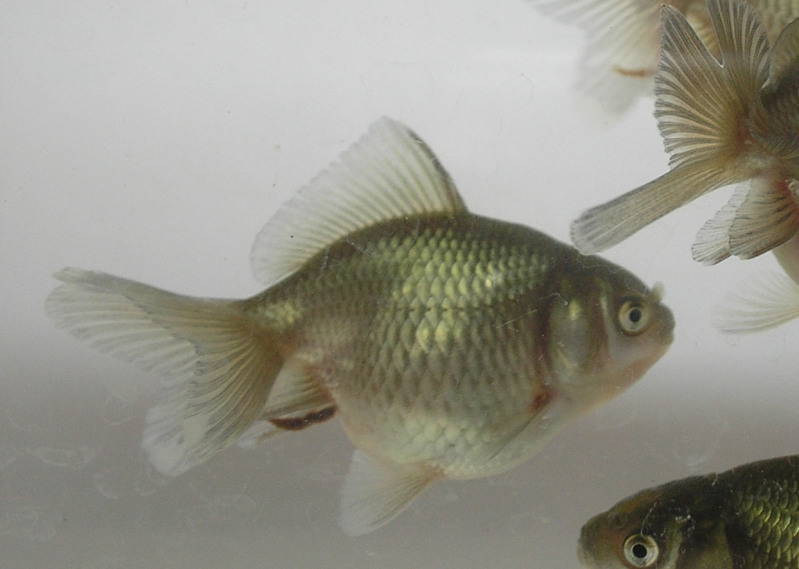
Or some fry could be superior like this one...

Now they are 3 ˝ months old, much bigger, their headgrowth started and most of them changing color. Body shape is pretty similar but there are changes in color and length. In this time I select fry with good headgrowth, biggest ones, the best fins and the best bodies. Until now no deaths or SBD.
At next discussion I will show one of the last culling or the selection for next breeder.






